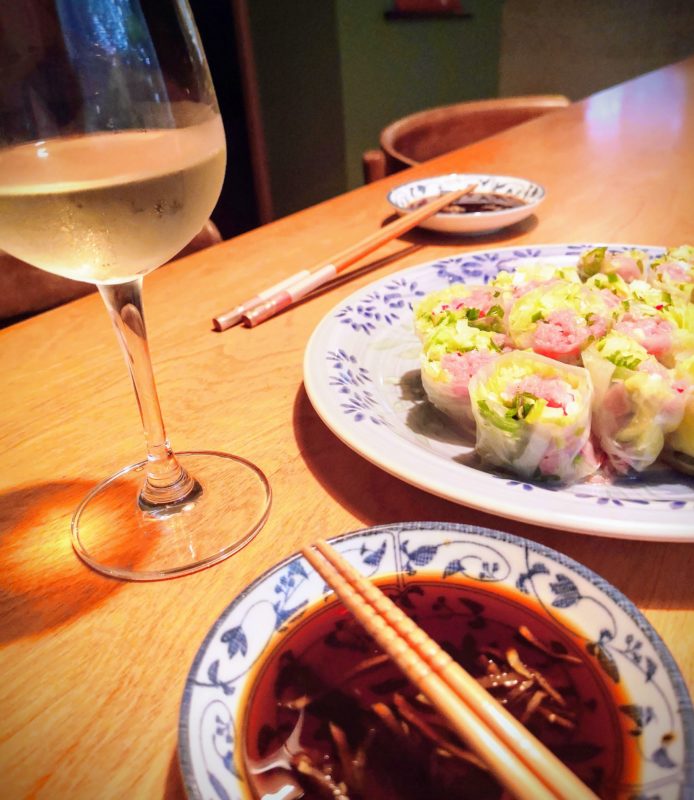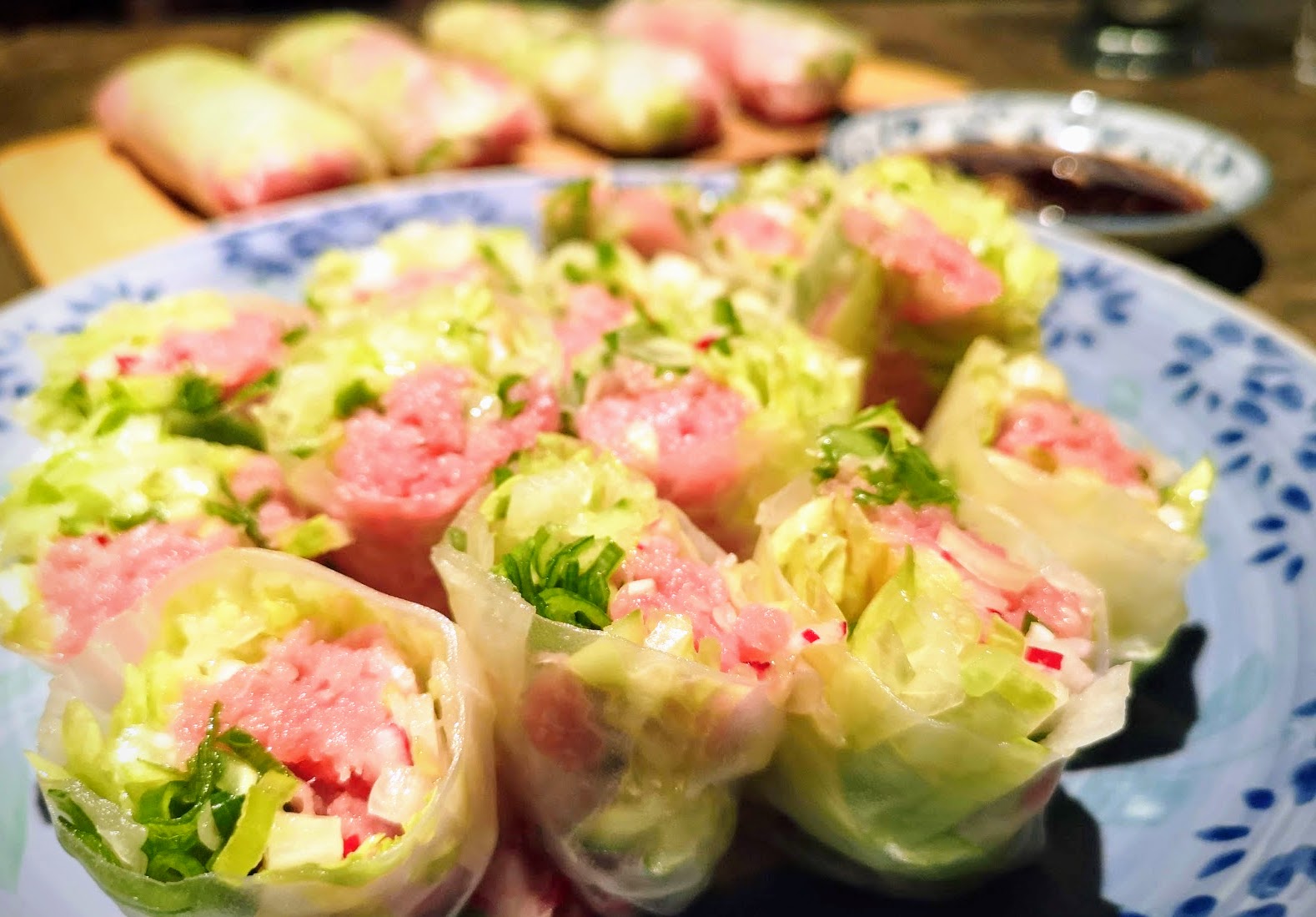Raw minced tuna is one of the most popular Japanese food. In North America, the common name is ‘Tuna Tartar,’ while it is called ‘Negi-toro’ in Japan.
The Japanese name ‘Negi-toro’ is a little confusing, because ‘Negi’ means spring onion and ‘Toro’ means ‘fatty part of Tuna,’ but we still call minced tuna ‘Negi-toro,’ even when it doesn’t have spring onions.
Introduction of Tuna Tartar (raw)
Frozen tuna tartar is available in a supermarket here in Canada. Because it is less fatty than in Japan I added some oily ingredients in order to work with an authentic Japanese recipe.
Fresh spring rolls with rice papers are originally Vietnamese food. You may say, “Then, it is not authentic Japanese food!” Indeed, it is a fusion, but Japanese people also love Vietnamese spring rolls and ‘Tuna Tartar’ works well with it. Also, this is a recipe of one of the most popular dishes in my previous working place, a Japanese restaurant in Hong Kong.
Ingredients for 8 spring rolls
- 250g of ‘Tuna Tartar’ (frozen)
- 2 tablespoons of mayonnaise
- 1 tablespoon of vegetable oil or sesame oil
- a pinch of salt
- chopped spring onions
- 4–6 leaves of ice burg lettuce
- 10–20g of cucumbers
- 1 avocado
- 8 sheets of rice papers
- soy sauce
- ginger or Wasabi
Tuna goes well with avocado. Unfortunately, I didn’t have avocado today, so I put finely sliced radishes instead.
Preparation
- Tuna Tartar has to be defrosted.
- Put the tuna in a bowl, add mayonnaise and oil (vegetable oil or sesame oil), a pinch of salt, then, mix well.
- Chop up the spring onions, slice the lettuce leaves and cucumbers. Peel an avocado, remove the stone, slice it in finger size.
- Peel the ginger skin, slice it like needles. Soy sauce should be served with ginger or Wasabi if you like.
Make spring rolls
- The package of rice papers normally has instructions — soak the dry rice paper and put it on a board or plate.
- In the centre of a piece of rice paper, put the vegetables and tuna in a rectangle shape.
- Fold over the bottom and sides of the rice paper and roll upwards, pushing out the air as much as you can.
- Cut the spring roll into 2–4 pieces, place them on a plate and serve with soy sauce.

with a glass of white wine, photo by Hana in 2019
Note:
I added mayonnaise and vegetable oil (or sesame oil) to tuna tartar because it is not as fatty as the one available in Japan. Otherwise, minced tuna would be too crumbly. You need the oil to act as a glue to stick it together.
However, if you buy it in Japan or directly form Japanese suppliers, you don’t have to add. You can see if it’s sticky enough when you mix tuna with a fork or chopsticks in a bowl. (If it’s a Japanese one, it will get sticky after you stir well).
Arrangements
You also can put sliced Yamaimo (Japanese yam) or tender-boiled Okuras in the spring roll as well.
Sheets of seaweed (Nori) can be rolled up together just inside the rice papers as well.
Serving for a home party or restaurant tips
Although they taste best just after they are freshly made, you can still prepare the rolls and keep them in the fridge before serving.
It is better to put them on a wooden board to avoid them getting stuck and to cover them with plastic to keep their moisture.


